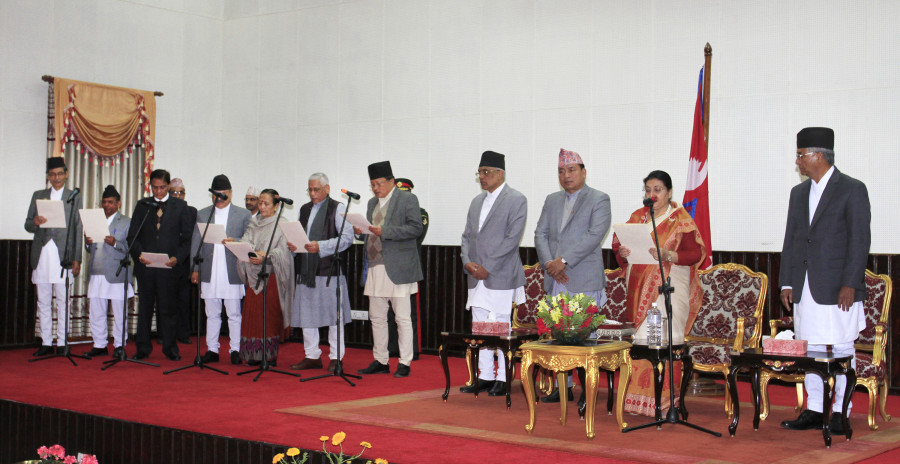Editorial
The way the provincial governors have been removed is not illegal, but it’s wrong
All seven governors were ejected in a totally unexpected move.
Prime Minister KP Oli’s health issues might have debilitated him; but make no mistake, he still has not lost his penchant for unilateral decision making. And what happened on Sunday, when the President (which, in fact, means the federal government) relieved the governors of all seven provinces of their duties, is a manifestation of that. A cabinet meeting held earlier in the day took the decision to remove the governors, all seven of whom had been appointed by the Sher Bahadur Deuba administration in January 2018. The move was totally unexpected. Indeed, it was not unconstitutional, but the constitution is a living document that guides people and leaders. It needs to be followed in its spirit, which is to always uphold the democratic process.
Granted, the President has the power to remove a governor at any time without giving him or her any reason. However, this power cannot be exercised in an arbitrary, capricious or unreasonable manner. The power of removing governors should only be exercised in rare and exceptional circumstances for valid and compelling reasons.
The appointment of the governors had become a highly contested issue last year. The then CPN-UML and CPN (Maoist Centre), had argued they had the right to appoint the governors since they form the government. The Oli government took the wheel from the Nepal Congress government led by Deuba in February, a month after the governors were appointed. But if a government that claims to be democratic can’t adjust and accommodate people of different political backgrounds, it will eventually begin to unravel.
Clearly, what happened on Sunday was sheer misuse of power and sets a bad precedent. They were not removed under proved misbehaviour or incapacity, but in a whimsical fashion that perhaps only those who are in the government can rationalise. No doubt, just as Bhimarjun Acharya, an expert on constitutional affairs, said, ‘the government needs to clarify its actions’. The role of the governor is primarily a ceremonial one, but it was envisioned after the state went into a federal set-up. When all seven governors are removed at once, it creates a vacuum. The government cannot utilise the governors for its own political ends.
It is easy to guess that such a sudden decision was taken because the ruling Nepal Communist Party wanted to manage its own leaders and factions. But when such arbitrary decisions are taken, it does nothing but aid in the weakening of institutions. These institutions have major responsibilities in translating constitutional visions into reality. Regrettably, they are becoming weaker day by day.
What’s more, receiving unrestricted access to information and the opinions of others are vital for the health of a democracy. But when the government starts forgetting this core value, it creates room for anarchy. Centralising power, weakening institutions and crushing dissenting voices are the major features of an authoritarian regime. The activities of the Oli-led government, unfortunately, tick all the boxes.




 6.84°C Kathmandu
6.84°C Kathmandu














